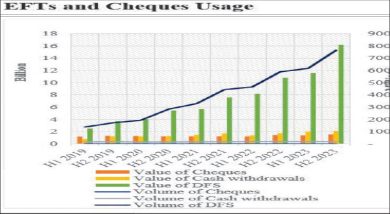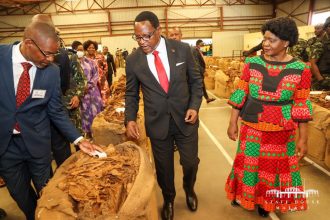Malawi current account deficit unsustainable

Malawi’s current account deficit, which has run at an average five percent between 1980 and 2010, is excessive and unsustainable, a research paper by an official from the Reserve Bank of Malawi (RBM) has revealed.
A current account deficit occurs when a country’s total imports of goods, services and transfers is greater than the country’s total exports of goods, services and transfers, making a country a net debtor to the rest of the world.
The paper by Oneile Nkuna, manager for banking operations, accepted by RBM in April this year, indicates that for Malawi’s current account to move towards a sustainable path, attention should be paid to external debt, terms of trade, openness, real exchange rate, net foreign assets and growth.
But University of Malawi’s Chancellor College economics professor Ben Kaluwa said there is a lot that Malawi can do to ensure that it balances the accounts such as growing hemp for industrial purposes.
“A current account deficit means that we are unable to meet our import requirements with our exports. A persistent deficit may require an economy to borrow to cover it under the capital account.
“However, we cannot plan based on borrowing and we need to diversify so that our exports meet our imports. There are a number of things that we can do to diversify, some of them imaginative, for instance, growing industrial hemp, chamba,” he suggested.
Kaluwa said hemp has high value and has a number of uses including medicinal and industrial and can be used for the production of lotions, hair oil, expensive textiles and for the construction industry.
“Some countries such as Swaziland and Lesotho are doing that [growing industrial hemp] and what we need here is serious minds,” he said.
Nkuna, in the paper, further indicates that the current account deficit was excessively above the norm, deviating by an average of five percent during the study period.
“Interestingly, even after the highly indebted poor countries relief, the current account was still unsustainable. In this regard, policies should ensure that the real exchange rate is not overvalued; growth is enhanced particularly in the export sector and also ensures that external debt is sustainable. These will ensure sustainable current account,” reads the paper in part.
The paper adds that the current account balance, which predominates the behaviour of Malawi’s balance of payments, has been in persistent deficit since the late 1970 and has been widening over time.
This, according to the paper, is over 15 percent average of gross domestic product (GDP) for the past decade and hit a low record of 26 percent of GDP in 2006.
The paper contends that official grants were not sufficient to offset the deficit, as such, the country borrowed extensively and externally to finance the deficit and this also led to high interest payments, further worsening the current account balance.






Spot on with this write-up, I really think this website needs considerably more consideration. I